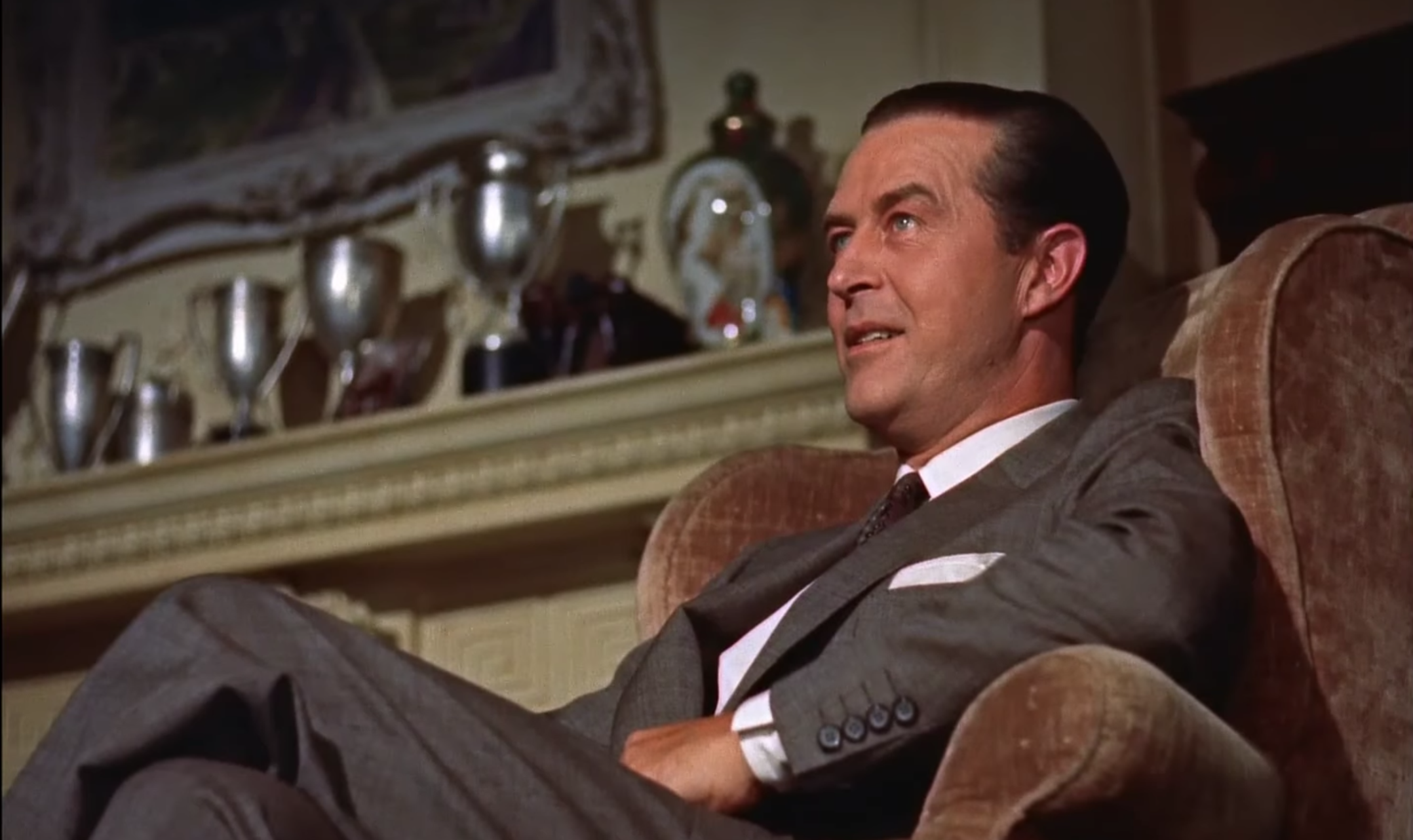Earlier today I happened upon some YouTube clips from Alfred Hitchcock‘s Dial M for Murder (’54). To my delight and astonishment they’re presented within a “boxy” aspect ratio (1.37:1), which I happened to see theatrically during a special engagement at Manhattan’s Eighth Street Playhouse in ’80 or thereabouts.
The higher, boxier image doesn’t include unnecessary air space or superfluous material. No dead spaces or boom mikes. Director of photography Robert Burks frames each shot with immaculate balance.
Thanks to Bob Furmanek and the 1.85 fascist cabal, the only high-def version you can watch today (via the 2012 Warner Home Video Bluray or the streaming component) offers a cleavered 1.78:1 aspect ratio — the original with the tops and bottoms chopped off.
Eight years ago Furmanek posted an explanation or rationale for the cleavered version — I’ve posted it after the jump.
Yes, you can still watch the boxy version if you get your hands on a 2006 WHV DVD. But that’s in 480p, of course, which looks fairly weak by today’s standards. It would be so wonderful if HBO Max would present the boxy version in HD, as they recently did with Stanley Kubrick‘s Full Metal Jacket. Here’s hoping, at least.
Furmanek on “boxy” Dial M:
“The revival theaters presented it incorrectly. I worked with Steve Hirsch at the 8th Street Playhouse in 1982, they were lucky to get an image on screen!
“Dial M was composed for 1.85:1 and protected for 1.37:1. That was the studio policy for all non-anamorphic widescreen productions. In fact that’s how all the studios appeased the small town exhibitors who were concerned over lack of product in that turbulent year of technological development. By the end of 1953, 58% of all U.S. theaters had installed widescreen, including all the major cities. By the end of the following year, those numbers were much higher.
“Paramount, Universal and Columbia had all gone widescreen by the end of March 1953.” [HE rebuttal: Who cares what aspect ratio the studios preferred in ’53 and in years that followed? HD home video is its own realm withj the freedom to live by its own rules.]
“For the record, WB announced their 100% widescreen policy on May 7, 1953. Dial M began production on August 5.
“This is not speculation. These are documented facts taken from primary source materials which include studio files and industry trade journals, such as Variety, Boxoffice, Film Daily, Motion Picture Herald, Exhibitor, Film Bulletin, American Cinematographer and many others. Since 1990, I’ve gone through these trade journals doing extensive 3-D research and can also document the widescreen revolution from that period on a daily basis.
“Repertory revivals, television airings and early home video releases are not representative of the way these films were meant to be seen. Thank goodness for the successful development of widescreen televisions. They are enabling future film students and historians to see these films with the correct compositions intended by the filmmakers.
“Bob Furmanek, 3-D Film Archive”

